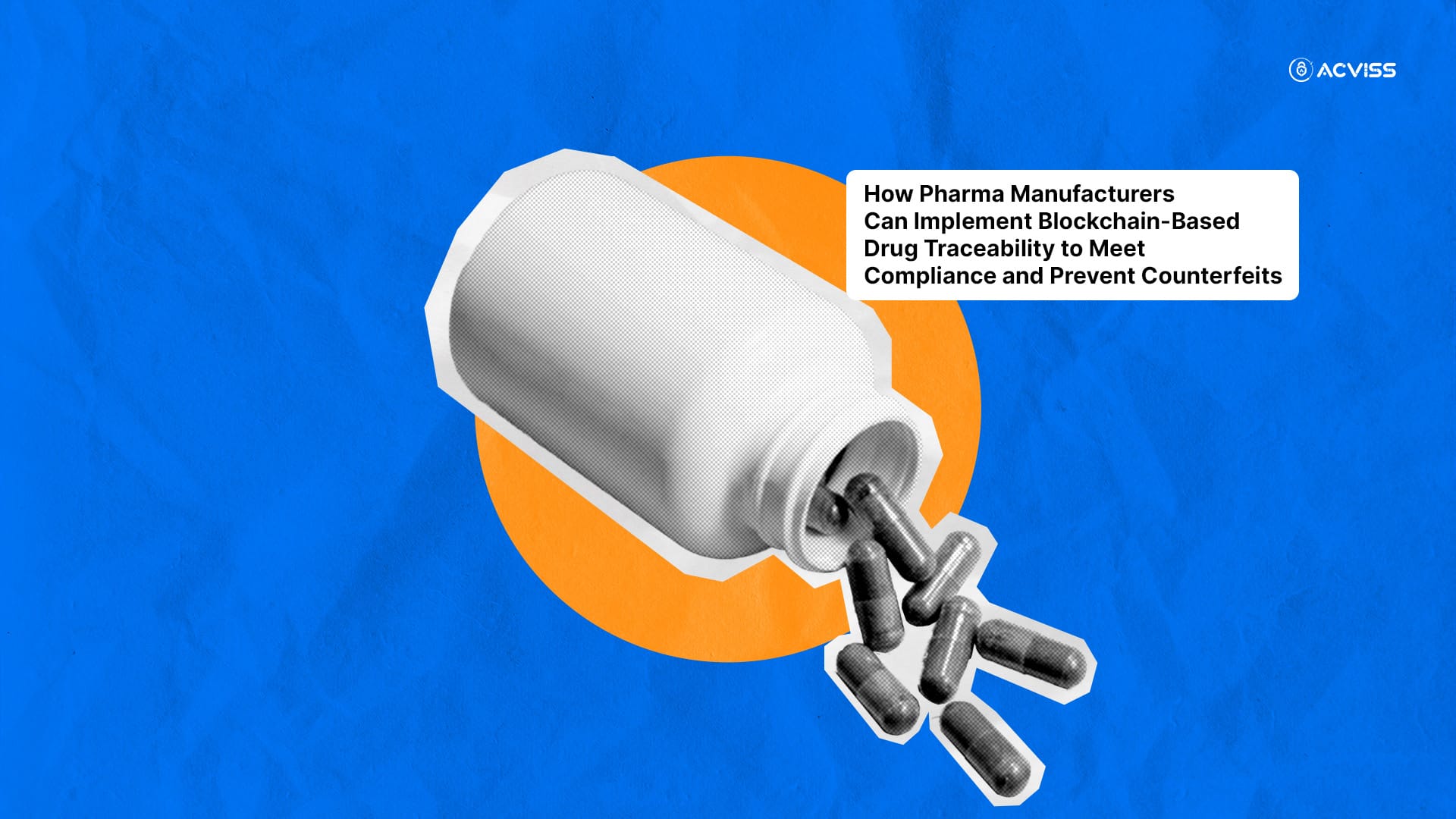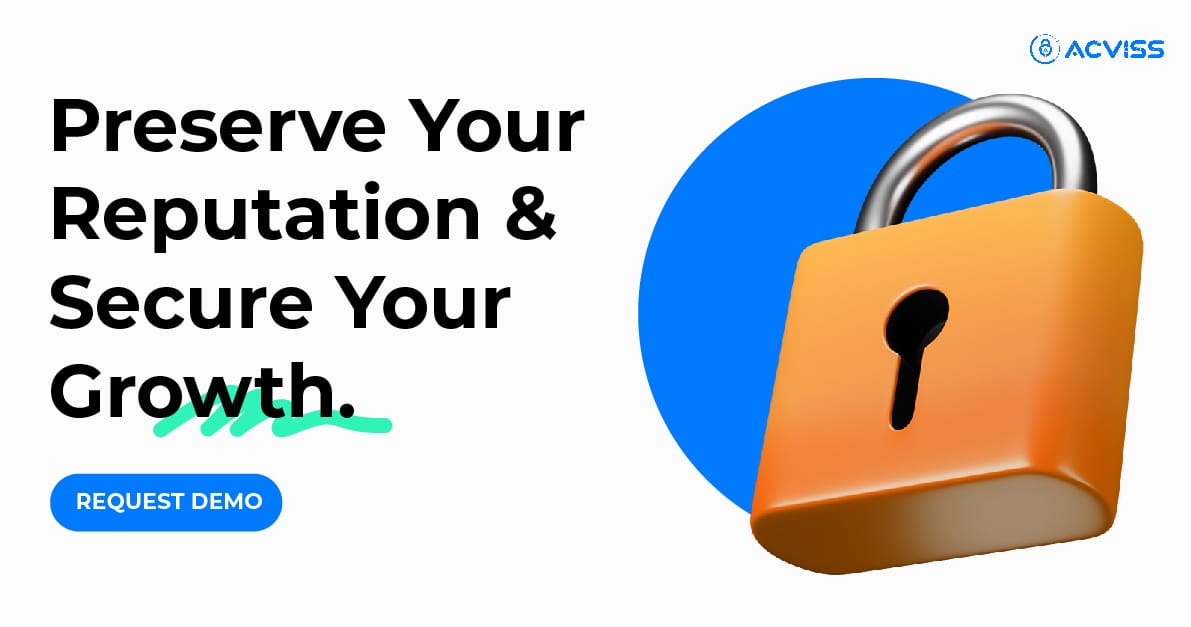How Blockchain Drug Traceability Helps Pharma Manufacturers Ensure Compliance and Prevent Counterfeits

Pharmaceuticals are unlike most products on the shelves. A mobile phone that fails may cause frustration, but a counterfeit drug can cost a life. According to the World Health Organisation, one in ten medical products circulating in low- and middle-income countries is either substandard or falsified. Interpol’s Operation Pangea alone has seized more than 100 million counterfeit medicines annually in recent years, underscoring the scale of the problem.
Pharma manufacturers are under enormous pressure to ensure their products remain safe, verifiable, and compliant throughout the supply chain. The global pharmaceutical supply chain stretches across multiple countries, involving raw material providers, contract manufacturers, distributors, wholesalers, and pharmacies. This complexity creates countless opportunities for counterfeiters to infiltrate the system with fake or substandard medicines.
At the same time, regulators worldwide are tightening their requirements. The US FDA’s Drug Supply Chain Security Act (DSCSA) and the European Union’s Falsified Medicines Directive (FMD) are among the most comprehensive track and trace regulations, mandating product traceability and serialisation. India, one of the largest exporters of generics, has also rolled out mandatory barcoding for exports. For pharma manufacturers, compliance is no longer optional, and neither is protecting patients and brands from counterfeiting risks.
So, how can pharmaceutical companies build a supply chain that ensures compliance while also acting as a fortress against counterfeiting? The answer increasingly lies in blockchain-based drug traceability systems, combined with advanced brand protection solutions and robust product verification technologies.
The Promise of Blockchain in Pharma Supply Chain
Blockchain is more than a buzzword. At its core, it is a distributed, immutable ledger that records transactions transparently and securely. Each block in the chain contains a record that cannot be altered without consensus, ensuring trust in environments where multiple stakeholders operate.
For pharmaceutical supply chains, blockchain offers several advantages:
- End-to-end visibility: Every transaction, from raw material procurement to dispensing at pharmacies, is recorded and visible.
- Tamper-proof records: Once a drug’s journey is logged, no one can retroactively alter its history without detection.
- Decentralisation: Since no single entity controls the data, manufacturers, distributors, and regulators can all access the same version of truth.
- Audit-ready compliance: Regulatory authorities can verify compliance instantly, without relying on paperwork or delayed reporting.
This structure addresses one of pharma’s biggest challenges: trust. Counterfeiters thrive in opacity, but transparency removes their hiding places.
Why Traditional Systems Fall Short
Many manufacturers already use ERP platforms, barcodes, or QR codes to manage product movement. While these systems improve efficiency, they have limitations when it comes to anti-counterfeiting solutions:
- Centralised vulnerabilities: A single compromised database can undermine the entire system.
- Limited interoperability: Data sharing across international borders and multiple vendors is often restricted.
- Forgery risks: Barcodes and QR codes alone can be cloned or manipulated without additional layers of protection.
The pharmaceutical industry requires more than just barcoding. It needs a combination of track and trace technologies, brand authentication tools, and blockchain-backed product traceability to establish a system that counterfeiters cannot breach.
Building a Blockchain-Based Traceability Framework

Step 1: Serialisation and Unique Identification
Every unit of medicine must be uniquely identifiable. Serialisation forms the backbone of compliance systems like the DSCSA and FMD. When integrated with blockchain, each serialised code is immutably registered on the ledger. This allows manufacturers and regulators to verify not only if the serial exists but also if it matches the correct journey of the product.
For advanced IP protection and trademark protection, non-cloneable identifiers such as cryptographic codes or tamper-proof digital labels add another layer of defence. These identifiers make it practically impossible for counterfeiters to reproduce authentic packaging.
Step 2: Recording Supply Chain Events
At every handover, whether it is from manufacturer to distributor or distributor to pharmacy, the event must be logged on the blockchain. This creates a chain of custody that provides product authentication at each stage. Patients and pharmacies can access the record through mobile applications or portals, verifying the origin and journey of the medicine.
Step 3: Integration with IoT and Smart Packaging
Blockchain becomes even more powerful when combined with IoT sensors or smart packaging technologies. Temperature-sensitive drugs like vaccines can have IoT-enabled trackers that log data directly onto blockchain, ensuring that compliance includes both product traceability and environmental monitoring.
Step 4: Enabling Consumer-Level Verification
The last mile is often the weakest link. Providing consumers with simple verification tools, manufacturers can extend trust directly to the patient. Scanning a label should instantly confirm the product’s authenticity, brand identity, and compliance record.
Beyond Compliance: Why Blockchain Matters for Brand Protection
While compliance is the trigger, the real value for pharma manufacturers lies in brand protection. Counterfeiting not only harms patients but also erodes trust, damages reputation, and leads to financial losses. According to a report by the OECD, trade in fake pharmaceuticals is valued at over USD 4.4 billion annually.
Blockchain-supported traceability offers companies the ability to:
- Enhance brand verification and brand authentication: Customers can trust that their medicine is genuine.
- Strengthen trademark and IP protection: Linking digital identifiers to legal rights, companies protect their intellectual property.
- Mitigate recall risks: With real-time tracking, manufacturers can quickly isolate and recall affected batches without halting the entire supply chain.
This dual role, meeting compliance while providing anti-counterfeiting solutions, creates long-term competitive advantage.
Case Studies and Real-World Applications
Several pharma companies are already exploring blockchain-based track and trace technologies:
- Pfizer, Merck, and Walmart collaborated with IBM’s blockchain platform to test interoperability across the supply chain. Their pilot demonstrated how multiple parties could verify and share drug information seamlessly.
- Modum in Switzerland integrates blockchain with IoT to monitor environmental conditions of pharmaceuticals in transit, ensuring both compliance and quality control.
- In India, blockchain pilots are being run to prepare for full-scale traceability regulations, particularly for export-oriented manufacturers.
These examples show that blockchain is no longer a theoretical solution. It is being tested and validated as a practical system for product verification and brand authentication.
The Role of Integrated Brand Protection Solutions

Blockchain is powerful, but it is not a silver bullet. Successful implementation requires combining it with holistic brand protection solutions. These solutions encompass:
- Non-cloneable labels that prevent duplication and provide instant product authentication.
- AI-driven surveillance tools that scan online marketplaces for counterfeit listings.
- Consumer engagement platforms that encourage customers to verify products while building loyalty.
Here, advanced platforms such as Origin, a blockchain-enabled track and trace solution, provide manufacturers with the ability to integrate digital labelling, supply chain monitoring, and real-time analytics in one place. Origin allows pharma companies to comply with regulatory mandates while strengthening consumer trust and safeguarding against counterfeits.
Implementation Challenges and How to Overcome Them

Adopting blockchain-based traceability is not without obstacles. Pharma manufacturers often cite concerns such as:
- High initial investment: Blockchain integration requires IT upgrades, training, and serialisation infrastructure.
- Interoperability issues: Ensuring different players in the supply chain adopt compatible systems can be complex.
- Regulatory uncertainties: Different countries are at different stages of mandating blockchain or digital traceability.
To overcome these challenges, manufacturers should:
- Start with pilot projects that cover specific product categories or geographies.
- Partner with technology providers experienced in both IP protection and track and trace solutions.
- Invest in scalable systems like Origin that can expand as regulations and business needs evolve.
- Engage stakeholders early to ensure adoption across the supply chain.
A Look Ahead: The Future of Pharma Supply Chain Management
The pharmaceutical industry is entering a new era of supply chain management, where compliance and brand protection are inseparable. In the future, blockchain will likely merge with AI, machine learning, and IoT to create predictive, intelligent supply chains.
For example:
- AI can analyse blockchain data to predict where counterfeit infiltration risks are highest.
- Smart contracts can automate regulatory reporting or recall execution.
- Patients can access not only product authentication but also extended information on sustainability and sourcing.
The result is a world where counterfeit drugs find no entry point, where product traceability is the norm, and where brands are trusted globally.
Conclusion
Counterfeit pharmaceuticals are more than a regulatory issue. They are a life-threatening global crisis that damages patient trust, erodes brand reputation, and undermines intellectual property rights. Blockchain-based traceability offers pharma manufacturers a way to comply with regulations while also fortifying their defences against counterfeiters.
By combining blockchain with brand protection solutions, product verification technologies, and consumer-level engagement, manufacturers can build a resilient and transparent supply chain. Platforms like Origin are already proving that compliance, anti-counterfeiting, and trust can go hand in hand.
Interested to learn more? Get in touch with us today.
